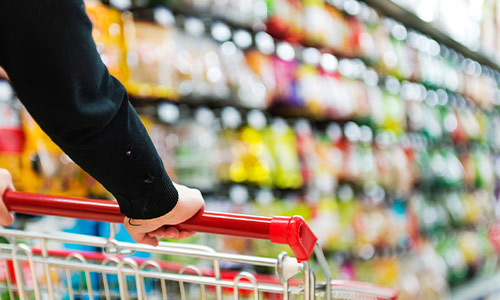Food banks across the United States are seeing an unprecedented demand for their services as a result of the COVID-19 pandemic. Feeding San Diego has reported a 40-50% increase in demand at their distribution centers. The United Food Bank in Mesa, Arizona is serving 4x the number of people they normally would. In Las Vegas, The Three Square Food Bank has increased weekly distribution by 30%. And in Amherst, MA, a food pantry distributed 849% more food in March than they did the previous year.
Although no one is being turned away right now, this is clearly unsustainable. The next COVID-19 relief package must strengthen the Supplemental Nutrition Assistance Program to lift up vulnerable families and stimulate the economy.
Food Banks Aren't Enough
There are several reasons the food banks are struggling right now, the first being that there are simply more people who need help. More than 40 million Americans were food insecure prior to the pandemic. Over the past 3+ weeks, an estimated 16 million Americans have filed for unemployment as COVID-19 has devastated the economy. On top of that immediate loss of income, the surge in claims has made filing for unemployment benefits difficult to process. Meanwhile, with schools nationwide closing their doors, millions of families have to find a way to replace the free or reduced-cost meals their children were receiving 5 days a week.

Finally, the logistics of distributing food has become much more difficult. Food banks depend on volunteers to help sort and pack the donations they receive. At many food banks & pantries, the most reliable and experienced volunteers are senior citizens, who now must stay home to protect themselves from contracting the virus. Corporate groups are another key source of volunteer labor, but with most employees now working from home, those shifts have been cancelled.
In order to adhere to social distancing guidelines, many food banks are switching to a drive-through distribution model. You may have seen images from the Greater Pittsburgh Community Food Bank or the San Antonio Food Bank, where the line of cars stretched for miles upon miles. Some people have reported waiting 8 hours for 1 box of food.
Veteran food bank employees claim they have never seen anything quite like this. And the worst may be yet to come. Public health experts say that reopening the economy too soon will lead to further outbreaks, and some suspect that all non-essential businesses remain closed well into the summer, and possibly the fall. Some economists have projected that the unemployment rate could rise to 32%, which would be well above the 25% peak of the Great Depression.
Strengthening SNAP will prevent widespread hunger
Emergency food providers have been doing hero's work, but if these projections hold true, they simply will not be able to provide enough food to everyone who needs it. In order to truly address the growing hunger crisis our country is facing, we need federal action. Move For Hunger is a member of the Alliance to End Hunger, and we support their call to strengthen SNAP benefits by 15% and to increase the minimum SNAP benefit from $16 to $30 in the next COVID-19 relief package.
 According to Feeding America, SNAP can provide 9 meals for every 1 meal that food banks can deliver. Although there was $15.8 billion appropriated to fund SNAP in the CARES Act, that was simply to cover the expected rise in SNAP caseloads – it wouldn’t actually increase the benefit individuals and families are receiving. A 15% increase would provide an additional $25 per person per month, or just under $100 per month in food assistance for a family of four. By providing families with a grocery benefit they can use to purchase food directly, SNAP is a safe, effective way to ensure that low-income children, families, and seniors can get the food they need.
According to Feeding America, SNAP can provide 9 meals for every 1 meal that food banks can deliver. Although there was $15.8 billion appropriated to fund SNAP in the CARES Act, that was simply to cover the expected rise in SNAP caseloads – it wouldn’t actually increase the benefit individuals and families are receiving. A 15% increase would provide an additional $25 per person per month, or just under $100 per month in food assistance for a family of four. By providing families with a grocery benefit they can use to purchase food directly, SNAP is a safe, effective way to ensure that low-income children, families, and seniors can get the food they need.
Expanding SNAP is also good for the economy. Recipients are able to spend more on food, which boosts retailers and grocery stores of all sizes. SNAP also increases the overall purchasing power of its beneficiaries, which allows them to spend more money on other essential items. Every SNAP dollar a household receives expands the economy by $1.70.
Although we appreciate the economic support that was included in the original CARES act, it is clear that more needs to done to help families put food on the table. We ask that you please contact your Representative and Senators and urge them to strengthen SNAP in the next COVID-19 relief bill. Please visit https://alliancetoendhunger.
The COVID-19 Pandemic has left a massive economic impact and has drastically increase the need for emergency food assistance nationwide. Move For Hunger is actively searching for ways to meet the demand, but we're going to need your help.
